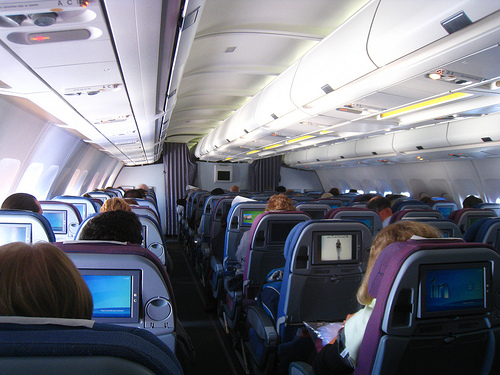Whether for business or for pleasure, the long-haul flight is a necessary evil that stands between you and your destination. For the majority who travel within the confines of the economy class cabin, with its limited leg-room and seat width, long-haul flights can lead to a range of uncomfortable physical ailments. Some of these ailments may be minor, such as cramp or stiffness in the joints or neck, while others may have more serious health implications.
In recent years the possibility of long-haul passengers being at risk of deep-vein thrombosis (DVT) has been the subject of much coverage and debate in the media, with a couple of high profile legal cases against airlines fuelling public interest and earning the condition the nickname ‘economy-class syndrome’.
In simple terms DVT refers to the formation of a blood clot or clots in deep veins as a result of extended periods of physical immobility. While DVT is not exclusive to long-haul flight passengers, the conditions of restricted movement imposed by air journeys in excess of five hours’ duration can be a contributory factor to cases of the condition.
The key to overcoming any of the physical problems that may arise as a consequence of long-haul flights is to tackle the immobility of joints and limbs, ensuring blood circulation is maintained as efficiently as possible. This may sound a difficult task to achieve in the cramped conditions of your economy-class seat, but the following exercises and tips can help you minimise or overcome that long-haul discomfort and keep DVT at bay.
1. Ankle Rotations
Making the most of the space available beneath the seat in front of you, straighten one leg and raise your foot off the floor. Slowly rotate your foot clockwise at the ankle for between ten and twenty rotations, and then rotate anti-clockwise for the same amount of rotations. Repeat the exercise with your other leg.
2. Head Rolls
Rest your head against the seat back and relax your shoulders and neck muscles as much as possible. Allow your head to gently roll to the left, then back to the middle position and then to the right. Repeat between five and ten times.
3. Muscle toning
Relax in your seat and breathe normally. Starting with your thigh muscles, tense them, keep them tensed for a few seconds and release them. Repeat between five and ten times. In the same way, clench your buttock (gluteal) muscles, hold and release. Again, repeat between five and ten times. Finally, tense your stomach (abdominal) muscles and hold then release for five to ten repetitions.
4. Shoulder Circles
While seated move yourself forward from the backrest a little way. With your back straight, shrug your shoulders upwards and gently circle them as you release the shrug. Continuing to circle your shoulders shrug them up again and lower them down, repeating the exercise between five and ten times.
5. Gentle stretching
Ensuring not to inconvenience your fellow passengers, slowly raise both arms above your head and gently stretch your upper body by reaching as far as you can while remaining comfortable in your seat. Now stretch out your legs as far as space will allow without making yourself uncomfortable. Hold this stretched position for five seconds then gently relax. Repeat this gentle stretch two or three times.
Each of these exercises can help to prevent cramps and maintain healthy blood circulation on long-haul flights. However, as and when the opportunity arises it is always advisable to stand up and walk around the cabin, so make the most of every journey to the restroom!
Another great exercise that you could do during, before, or even after the flight is the good mornings exercise. It’s perfect for providing relief to your hamstrings, lower back, and the entire posterior chain.
About the author
This article has been written by John for flights comparison website Cheapflights.co.uk. Compare prices on flights to Amsterdam today.



 By
By 







